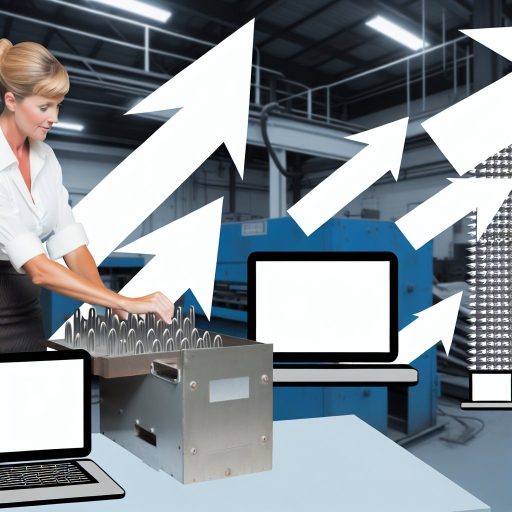Overview of Roofing Materials
Types of Roofing Materials
Many roofing materials exist.
Each has unique characteristics.
Common materials include asphalt shingles.
Metal is also a popular choice.
Tile and slate are frequently used types.
Each type offers distinct advantages for different applications.
Homeowners must choose materials based on durability.
Cost is another important factor.
Aesthetics also play a crucial role in selection.
Asphalt Shingles
Asphalt shingles rank among the most popular roofing materials.
They are relatively affordable.
Installation is also easy with this material.
They come in various colors and styles.
This versatility allows homeowners to match their roofs to home designs.
However, they may require replacement every 15 to 30 years.
Metal Roofing
Metal roofing provides a long-lasting and durable option.
This material can withstand severe weather conditions.
It reflects solar heat, reducing energy costs.
Metal roofs often come in sheets or shingles.
This offers flexibility to the homeowner.
Although initially more expensive, they save money in the long run.
Tile Roofing
Tile roofing is renowned for its durability and aesthetic appeal.
It offers excellent resistance against fire and insects.
Clay and concrete tiles are common choices in this category.
Tile roofs are heavy but can last for decades with proper maintenance.
Unlock Your Career Potential
Visualize a clear path to success with our tailored Career Consulting service. Personalized insights in just 1-3 days.
Get StartedThey are ideal for warm climates with low rainfall.
Slate Roofing
Slate roofing is a premium option known for its classic look.
It has exceptional longevity and can last over 100 years.
Slate is one of the heaviest roofing materials.
Only experienced roofers should install this type.
It is suitable for historic homes or upscale new builds.
Wood Shakes and Shingles
Wood shakes and shingles provide a natural and rustic appearance.
They typically come from cedar, pine, or redwood.
These materials offer good insulation and ventilation properties.
However, wood roofing requires regular maintenance and treatment.
Wood roofing is not ideal for areas prone to wildfire risks.
Best Applications for Roofing Materials
Residential Homes
Residential roofing requires materials that balance cost and durability.
Asphalt shingles and metal are popular choices for homes.
They provide adequate protection while fitting various styles.
Commercial Buildings
Commercial properties often use materials like flat roofs or metal panels.
These materials cater to larger structures and high traffic areas.
They require materials that offer low maintenance and long life.
Historical Buildings
Historical buildings often require specific materials to maintain their integrity.
Slate and tile roofs are common in preserving original architecture.
Professional consultation is crucial for these projects.
Climate Considerations
Choosing roofing materials involves considering regional climate factors.
Metal roofs excel in hot climates.
Tile and slate perform well in wet conditions.
Understanding local weather patterns is essential for optimal performance.
Asphalt Shingles: Pros, Cons, and Best Applications
Overview of Asphalt Shingles
Asphalt shingles are a popular choice for many roofing projects.
They offer an affordable option for homeowners and builders.
These shingles come in a variety of styles and colors.
As a result, you can customize them to fit your aesthetic preferences.
Pros of Asphalt Shingles
Asphalt shingles have several advantages that make them appealing.
- They are cost-effective compared to other materials.
- Their installation process is relatively quick and straightforward.
- They provide adequate protection against the elements.
- Asphalt shingles are available in various designs.
Cons of Asphalt Shingles
Despite their benefits, asphalt shingles also have drawbacks.
- They may not last as long as premium roofing materials.
- Some types can deteriorate in extreme weather conditions.
- They are less environmentally friendly than other options.
Best Applications for Asphalt Shingles
Asphalt shingles are suitable for a range of roofing projects.
They work well for residential homes in various climates.
Additionally, they are commonly used in new construction and roof replacements.
However, they may not be the best choice for areas with heavy snowfall.
Ultimately, assess your local climate and architectural style before choosing.
Metal Roofing: Durability and Aesthetic Considerations
Understanding Metal Roofing
Metal roofing offers unmatched durability compared to other materials.
It withstands harsh weather conditions effectively.
This roofing type resists rust, corrosion, and impact damage.
Furthermore, metal roofs can have a lifespan of 40-70 years.
Homeowners appreciate their longevity and low maintenance requirements.
Aesthetic Versatility
Metal roofing provides a wide range of design choices.
Homeowners can select from various colors and finishes.
This flexibility allows matching with different architectural styles.
Additionally, options like standing seam and corrugated panels enhance visual appeal.
Metal roofs can also mimic traditional materials like wood and slate.
Energy Efficiency
Metal roofing contributes to energy efficiency in homes.
Its reflective properties help reduce cooling costs in warm climates.
Moreover, homeowners can benefit from energy-efficient coatings.
These coatings further enhance the roof’s reflective capabilities.
Environmental Considerations
Metal roofing is often made from recycled materials.
This trait makes it an eco-friendly option for conscious consumers.
At the end of its life, metal roofing can also be recycled.
Choosing metal contributes to reducing overall waste in landfills.
Cost-Effectiveness of Metal Roofing
Initially, metal roofing may appear more expensive than asphalt shingles.
However, its longevity and low maintenance can lead to savings over time.
Homeowners should consider this lifecycle cost when budgeting.
Moreover, metal roofs can increase a home’s resale value significantly.
Learn More: How Roofers Maintain Roofs to Increase Longevity
Clay and Concrete Tiles: Benefits in Different Climates
Overview of Clay and Concrete Tiles
Clay and concrete tiles are popular roofing materials.
They provide durability and aesthetic appeal.
Additionally, they come in various shapes and colors.
This versatility makes them suitable for various architectural styles.
Benefits of Clay Tiles
Clay tiles are highly resilient to extreme weather conditions.
They are particularly effective in hot and dry climates.
In these regions, clay tiles help keep homes cool and comfortable.
Furthermore, they are fire-resistant, adding safety to properties.
Clay tiles also have a long lifespan, often lasting over 100 years.
Benefits of Concrete Tiles
Concrete tiles also offer great durability and versatility.
They can withstand heavy rain and strong winds.
This durability makes them ideal for coastal areas prone to storms.
Concrete tiles are energy-efficient, reflecting sunlight and reducing heat absorption.
This feature helps lower energy costs in warmer climates.
Environmental Considerations
Both clay and concrete tiles are environmentally friendly options.
Clay tiles are made from natural materials and are recyclable.
Concrete tiles can incorporate recycled materials, further reducing waste.
Choosing these materials can contribute to sustainable building practices.
Cost and Installation Factors
While the initial cost of clay and concrete tiles may be higher, their longevity offsets this expense.
Installation can require skilled labor due to the weight of the materials.
This investment pays off in the long run through reduced maintenance and replacement costs.
Choosing Tiles Based on Climate Needs
Both clay and concrete tiles excel in various climates.
Clay tiles shine in dry, hot conditions while concrete tiles manage well in humid, storm-prone areas.
Homeowners should consider their specific climate needs when choosing roofing materials.
You Might Also Like: Steps to Getting Certified as an HVAC Technician
Wood Shakes and Shingles: Aesthetic Appeal vs. Maintenance
Introduction to Wood Roofing
Wood shakes and shingles offer a unique aesthetic that many homeowners desire.
They are often considered a classic choice for roofing materials.
This section explores their appeal and the maintenance they require.
Aesthetic Appeal
Wood roofing adds natural beauty to any home.
It enhances the architectural design with its rustic charm.
Various wood types contribute to different looks and textures.
Cedar, for example, is particularly valued for its rich color and durability.
Moreover, wood ages gracefully, providing a unique patina over time.
Homeowners appreciate how wood complements landscaping and surroundings.
Maintenance Requirements
Wood shakes and shingles require regular maintenance to preserve their beauty.
Cleaning is essential to prevent mold and algae growth.
Homeowners must inspect for damage following storms or heavy winds.
Additionally, applying sealants can help increase longevity.
Over time, wood may also require re-roofing due to natural wear.
Best Applications
Wood shakes and shingles are ideal for specific architectural styles.
They suit traditional and contemporary homes alike.
However, they are not always suitable for harsh climates.
In areas with high fire danger, other materials may be a better choice.
Ultimately, the decision should factor in both aesthetics and maintenance.
Balancing Aesthetics and Maintenance in Wood Roofing Choices
Homeowners should consider their lifestyle when selecting roofing materials.
For those who prefer low-maintenance options, alternatives exist.
However, for others who value aesthetics, wood may be worth the effort.
Custom installations can enhance appeal while balancing maintenance needs.
Discover More: Insights into Roofing Contracts for New Roofers

Slate Roofing: Long-Term Investment and Lifespan
Understanding Slate Roofing
Slate roofing is a durable and attractive roofing material.
It is made from natural stone and provides excellent weather resistance.
Furthermore, slate enhances a home’s aesthetic appeal.
Advantages of Slate Roofing
Slate roofs offer remarkable longevity.
With proper maintenance, they can last over a century.
They are also fire-resistant, adding an extra layer of safety.
Additionally, slate roofs require minimal maintenance.
This makes them a cost-effective choice in the long run.
Cost Considerations of Slate Roofing
Initial costs for slate roofing can be high.
However, homeowners should view this as a long-term investment.
Consider the durability and longevity of the material.
Over time, slate roofing saves money on repairs and replacements.
Best Applications for Slate Roofing
Slate roofing suits various architectural styles.
It works beautifully on traditional and modern homes alike.
Residential buildings stand to benefit greatly from its beauty and durability.
Moreover, slate is particularly advantageous in areas with heavy rainfall or snow.
Installation Requirements for Slate Roofing
Slate roofing requires skilled installation.
Hiring experienced contractors ensures proper fitting and longevity.
Improper installation may lead to costly repairs.
Therefore, always prioritize professional expertise.
Benefits of Investing in Slate Roofing
Slate roofing is a wise choice for many homeowners.
Its longevity, durability, and aesthetic appeal make it a top contender.
Investing in slate roofing pays off in the long run.
Discover More: The Importance of Teamwork in Ironworking Projects
Synthetic Roofing Materials: Innovations and Eco-Friendly Options
Introduction to Synthetic Roofing
Synthetic roofing materials have gained popularity in recent years.
They provide durability and a variety of aesthetic choices.
Additionally, they often require less maintenance than traditional options.
Types of Synthetic Roofing Materials
Several types of synthetic roofing materials are available today.
These include synthetic slate, rubber, and polyethylene.
Synthetic slate offers the appearance of natural stone without the weight.
Rubber roofing is an excellent choice for flat roofs.
Polyethylene roofing panels are lightweight and easy to install.
Advantages of Synthetic Roofing
Synthetic roofing materials offer many benefits over traditional ones.
First, they are more durable and can withstand harsh weather conditions.
Second, they are often lighter, reducing structural load.
Moreover, many synthetic options are energy-efficient.
This can lead to lower energy bills over time.
Eco-Friendly Innovations in Synthetic Roofing
Many manufacturers focus on creating eco-friendly synthetic roofing materials.
These materials are often made from recycled products.
For instance, synthetic slate can be produced using post-consumer waste.
This process minimizes the environmental footprint.
Additionally, some synthetic materials are recyclable at the end of their lifespan.
Factors to Consider When Selecting Synthetic Roofing Materials
Selecting the right synthetic roofing material depends on several factors.
Consider the climate and the roof’s slope when making your choice.
Also, assess the aesthetic you desire for your building.
Consulting with a roofing professional can provide valuable insights.
They can help match the right material with specific project requirements.
Synthetic Roofing Materials as a Durable and Sustainable Solution
Synthetic roofing materials represent a significant innovation in the industry.
They provide durable, eco-friendly options for modern construction.
With numerous benefits, they are worth considering for your next roofing project.
Selecting the Right Roofing Material for Different Building Types
Residential Roofing
Residential buildings require materials that combine style and durability.
Asphalt shingles are popular due to their affordability and ease of installation.
Clay tiles provide a distinctive look and excellent durability.
Metal roofing offers longevity and is resistant to severe weather.
Each of these materials serves different aesthetic and functional needs.
Commercial Roofing
Commercial roofs face unique challenges due to their size and usage.
Flat roofing systems, like TPO and EPDM, are common in commercial settings.
They offer versatility and ease of maintenance for large areas.
Built-up roofing systems provide excellent waterproofing and insulation properties.
Choosing the right material enhances the building’s energy efficiency.
Industrial Roofing
Industrial roofs need to withstand heavy loads and extreme conditions.
Metal roofing is often the preferred choice for its strength and durability.
It can handle the stresses of equipment weight and weather.
Additionally, insulated panels offer energy efficiency and temperature control.
Safety and compliance with regulations are critical in this sector.
Historic and Specialty Roofing
Historic buildings require careful considerations when selecting roofing materials.
Slate and tile can maintain the building’s original character and appearance.
Furthermore, green roofs provide modern aesthetic and environmental benefits.
These options contribute to sustainability while respecting historical value.
Finding materials that match the integrity of the structure is essential.
Additional Resources
U.S. – Mexico – Canada Agreement (USMCA) Frequently Asked …
Customs Trade Partnership Against Terrorism (CTPAT) | U.S. …




